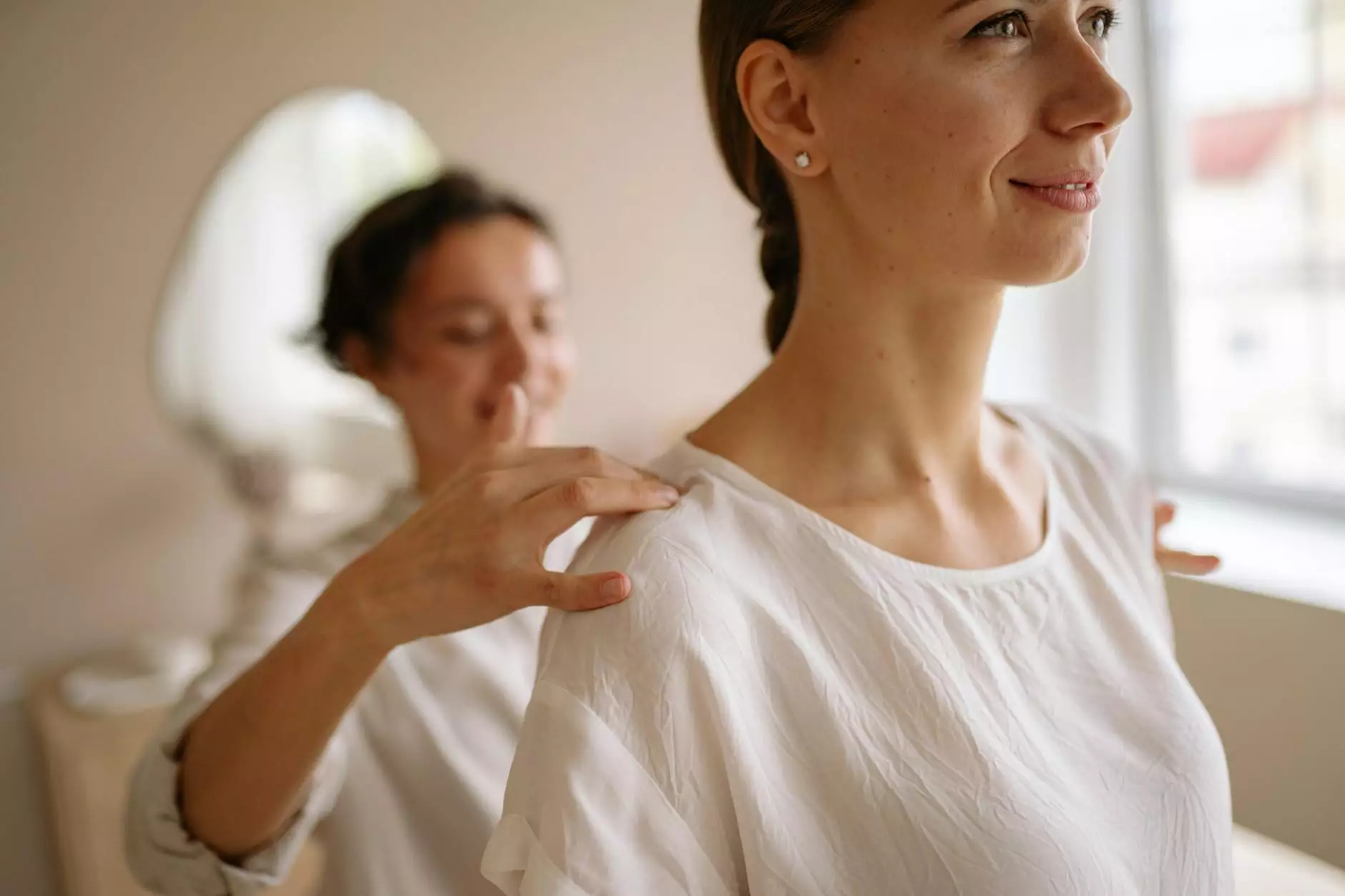Understanding the Capsular Pattern of Frozen Shoulder: An Essential Guide for Health & Medical Professionals and Educators

Frozen shoulder, clinically known as adhesive capsulitis, is a common yet complex condition that can significantly impair shoulder mobility and function. A thorough understanding of its capsular pattern is crucial for accurate diagnosis, effective treatment planning, and enhancing patient outcomes. This comprehensive article delves into the intricacies of the capsular pattern of frozen shoulder, exploring its pathophysiology, clinical presentation, diagnostic considerations, and multidisciplinary approaches for management.
What is Adhesive Capsulitis and Why is the Capsular Pattern Critical?
Adhesive capsulitis, or frozen shoulder, is characterized by progressive pain, stiffness, and limited range of motion (ROM) in the shoulder joint. It predominantly affects adults aged 40-60 but can occur at any age and affects both genders equally. Recognizing the specific capsular pattern of restrictions is vital because it guides clinicians toward accurate diagnosis and tailored intervention strategies.
The capsular pattern refers to the predictable order in which passive shoulder movements become restricted due to capsular fibrosis and thickening. It encapsulates the functional impact of the pathology and serves as a clinical hallmark distinguishing frozen shoulder from other shoulder conditions.
The Anatomy and Pathophysiology Underlying the Capsular Pattern of Frozen Shoulder
The shoulder joint, or glenohumeral joint, is a ball-and-socket joint formed by the humeral head and the glenoid cavity of the scapula. Its stability relies heavily on the capsule, ligaments, and surrounding musculature. In frozen shoulder, the capsule undergoes inflammation, fibrosis, and contracture, particularly affecting the axillary pouch and rotator interval.
The pathological changes result in a thickened, contracted capsule that restricts movement systematically. The progression of inflammation to fibrosis causes increased stiffness, which manifests in a characteristic pattern of movement limitations, known as the capsular pattern.
Characterizing the Capsular Pattern of Frozen Shoulder
The hallmark of frozen shoulder is a specific, predictable limitation in shoulder movements, which usually progresses through three stages: freezing, frozen, and thawing. The capsular pattern observed in the frozen stage involves the following:
- External Rotation: The most restricted movement, often limited to less than 50% of normal ROM.
- Abduction: Significantly limited, typically the second most affected movement.
- Internal Rotation: Usually the least restricted but still limited compared to normal.
This pattern—external rotation being most limited, followed by abduction, then internal rotation—is diagnostic of frozen shoulder and is key for clinicians during physical examination.
Clinical Features and Diagnosis of Frozen Shoulder
Assessment begins with detailed history-taking and a comprehensive physical examination focusing on active and passive ROM testing. Key clinical features include:
- Pain: Usually dull, aching pain localized in the shoulder, worse at night or during movement.
- Stiffness: Marked restriction in passive shoulder movements, especially in external rotation and abduction.
- Progression: The pain and stiffness typically follow a predictable timeline, correlating to the stages of frozen shoulder.
The diagnosis hinges on identifying the capsular pattern via passive range of motion tests. Additional diagnostic tools such as ultrasound or MRI can reveal capsular thickening, synovitis, or adhesions, confirming the clinical suspicion.
Differential Diagnosis: Distinguishing Frozen Shoulder from Other Shoulder Conditions
Many shoulder pathologies can mimic frozen shoulder, including rotator cuff tears, osteoarthritis, and calcific tendinitis. Differentiating these relies on:
- Pattern of restriction: Frozen shoulder has the classic capsular pattern; other conditions often have different movement restrictions.
- Pain localization: Glenohumeral joint pain is common in frozen shoulder, whereas rotator cuff tears often involve weakness and specific symptomatic patterns.
- Imaging findings: MRI or ultrasound showing capsular thickening supports a diagnosis of adhesive capsulitis.
Managing the Capsular Pattern of Frozen Shoulder: Therapeutic Strategies
Effective management aims to reduce pain, restore ROM, and improve shoulder function. A multidisciplinary approach includes:
Conservative Treatments
- Physical therapy: Focused on stretching, joint mobilizations, and activity modification.
- Medication: NSAIDs for pain relief, corticosteroid injections to reduce inflammation and improve mobility.
- Home exercises: Shoulder pendulum swings, wall climbs, and passive stretching to maintain joint mobility.
Advanced Interventions
- Hydrodilatation: Injecting saline into the joint to expand the capsule and break adhesions.
- Capsular release surgery: Arthroscopic procedures to release fibrotic tissue when conservative treatments fail.
- Manual therapy: Skilled chiropractors may employ targeted adjustments, soft tissue techniques, and mobilizations to address capsular tightness.
The Role of Chiropractic and Physiotherapy in Addressing the Capsular Pattern
Chiropractors and physiotherapists play a pivotal role in managing frozen shoulder by promoting joint mobilization, soft tissue release, and functional rehabilitation tailored to the capsular pattern. Their interventions aim to:
- Restore normal movement patterns by stretching the restricted capsule.
- Reduce pain and inflammation through multimodal approaches.
- Enhance patient education about activity modifications and self-management techniques.
Rehabilitation and Prognosis
The prognosis of frozen shoulder varies but typically involves spontaneous resolution over 12-24 months. Early and targeted intervention can significantly accelerate recovery and minimize the impact of the capsular pattern. Rehabilitation should be staged, beginning with pain control symptoms, progressing to active and passive stretching, and finally strengthening exercises.
Emerging Perspectives and Research on the Capsular Pattern in Frozen Shoulder
Recent advances in imaging and tissue research have deepened understanding of the molecular and cellular mechanisms that lead to capsular contracture. Studies indicate that inflammatory cytokines and fibroblast proliferation contribute to capsular fibrosis, underpinning the characteristic pattern of motion restriction. Emerging treatments, such as platelet-rich plasma (PRP) injections and biologic therapies, show promise in modulating fibrosis and restoring mobility.
Conclusion: The Significance of Recognizing the Capsular Pattern of Frozen Shoulder
Understanding the capsular pattern of frozen shoulder is foundational for clinicians, physical therapists, and educators involved in musculoskeletal health. It informs diagnostic precision, guides effective treatment strategies, and helps optimize patient outcomes. Recognizing the sequence of movement restrictions and the underlying pathology allows for early intervention, reducing the burden of chronic pain and disability.
As research advances, the integration of imaging, minimally invasive procedures, and regenerative medicine will continue to improve management protocols. Education systems should emphasize the importance of clinical pattern recognition in shoulder pathologies, ensuring future healthcare providers are equipped with the knowledge needed to deliver exceptional care.
Final Thought
In summary, the capsular pattern of frozen shoulder is more than just a clinical curiosity; it is a critical diagnostic marker that encapsulates the pathology's essence. Mastery of this pattern enables healthcare professionals to develop targeted, effective interventions, ultimately enhancing quality of life for affected individuals and advancing the field of musculoskeletal health.









